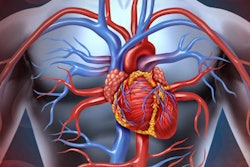Dear CT Insider,
An increasing number of healthcare institutions across the U.S. have been using CT to screen patients for lung cancer, ever since large-scale trials such as the National Lung Screening Trial demonstrated its potential to reduce mortality.
But implementing CT lung cancer screening isn't without its own challenges, including getting clinicians to adhere to consensus reporting guidelines, selecting a uniform scanning protocol when dealing with different CT scanner models, and ensuring that patients receive follow-up care. Read about the measures researchers from the University of Florida took to counter these and other hurdles when screening for lung cancer with CT in our Insider Exclusive.
A different group also evaluated the outcome of a CT lung screening demonstration project, but one performed within the U.S. Department of Veterans Affairs health network. The findings contributed to the ongoing debate over the ideal patient criteria for lung cancer screening. One proposal made by a separate team of investigators from the U.S. National Cancer Institute was to use individual risk-based criteria to determine eligibility for CT lung cancer screening.
Despite its potential to reduce mortality in the U.S., CT lung cancer screening continues to suffer from low participation. The American Cancer Society disclosed the trend in its annual report on cancer.
In a collaborative effort, researchers from the U.S. National Institutes of Health and Charité-Universitätsmedizin Berlin in Germany investigated the performance of CT myocardial perfusion imaging for diagnosing coronary artery disease and revealed how well it compared with MR perfusion. In a similar vein, Stanford University researchers explored the potential benefits of CT and MR perfusion imaging for stroke treatment, which they presented at the 2018 International Stroke Conference in Los Angeles.
In addition, myriad other CT news and research has emerged in the past several weeks:
- A multi-institutional team from Cleveland combined artificial intelligence and radiomics to distinguish lung nodules on CT.
- CT for pulmonary embolism has a low diagnostic yield, but how does its use in hospital emergency departments reflect this finding? Discover what Yale University researchers found.
- Pediatric CT scanning is complicated by variations in the size and weight of children. Researchers from Finland used dose monitoring software to highlight differences in radiation dose for head and cervical spine CT exams. And Michigan clinicians shared their findings concerning the use of oral contrast to detect appendicitis in kids.
These descriptions represent just a selection of the stories available in our CT Community. Head over to AuntMinnie.com to learn more about the goings-on in the field.



















